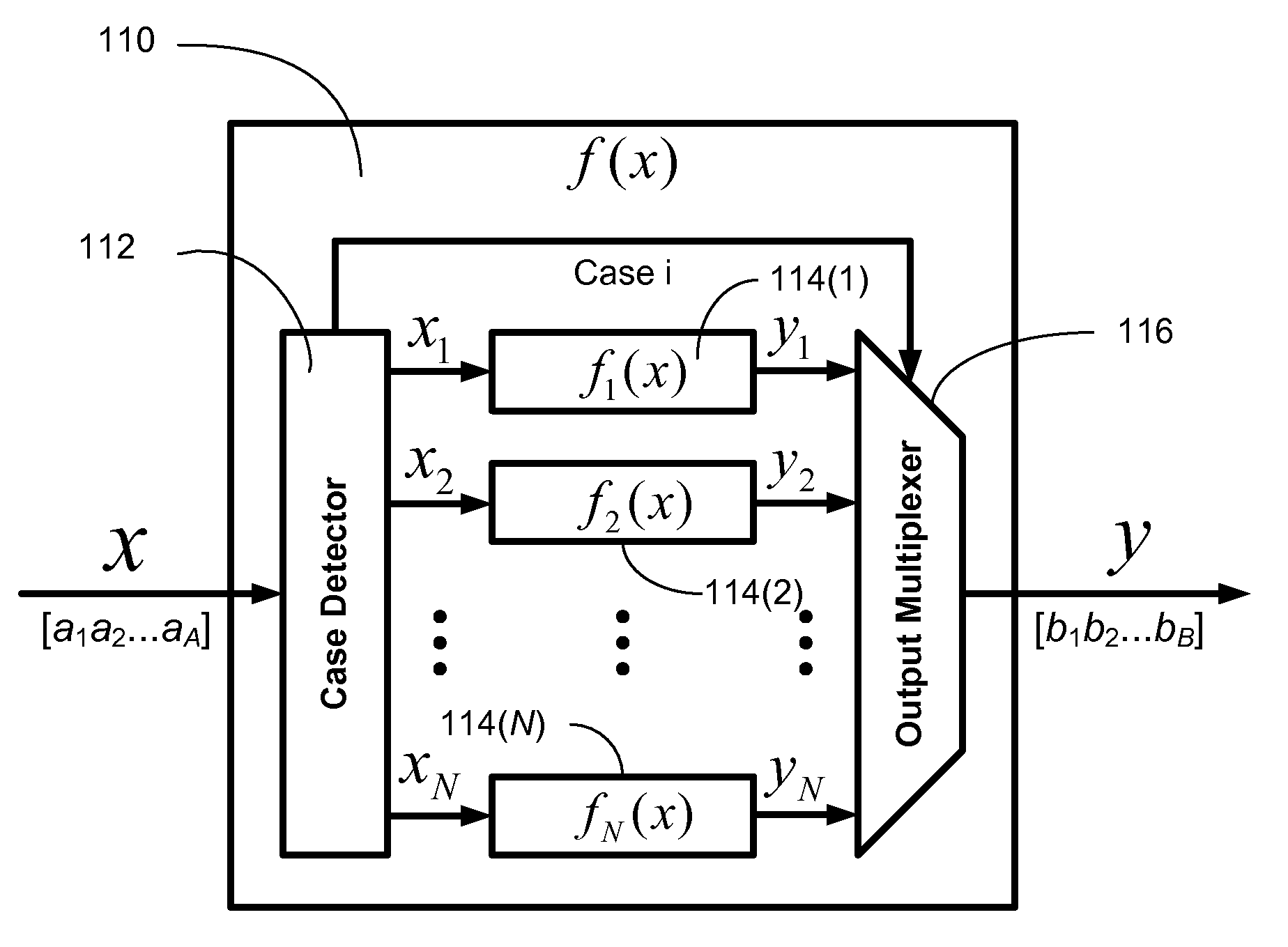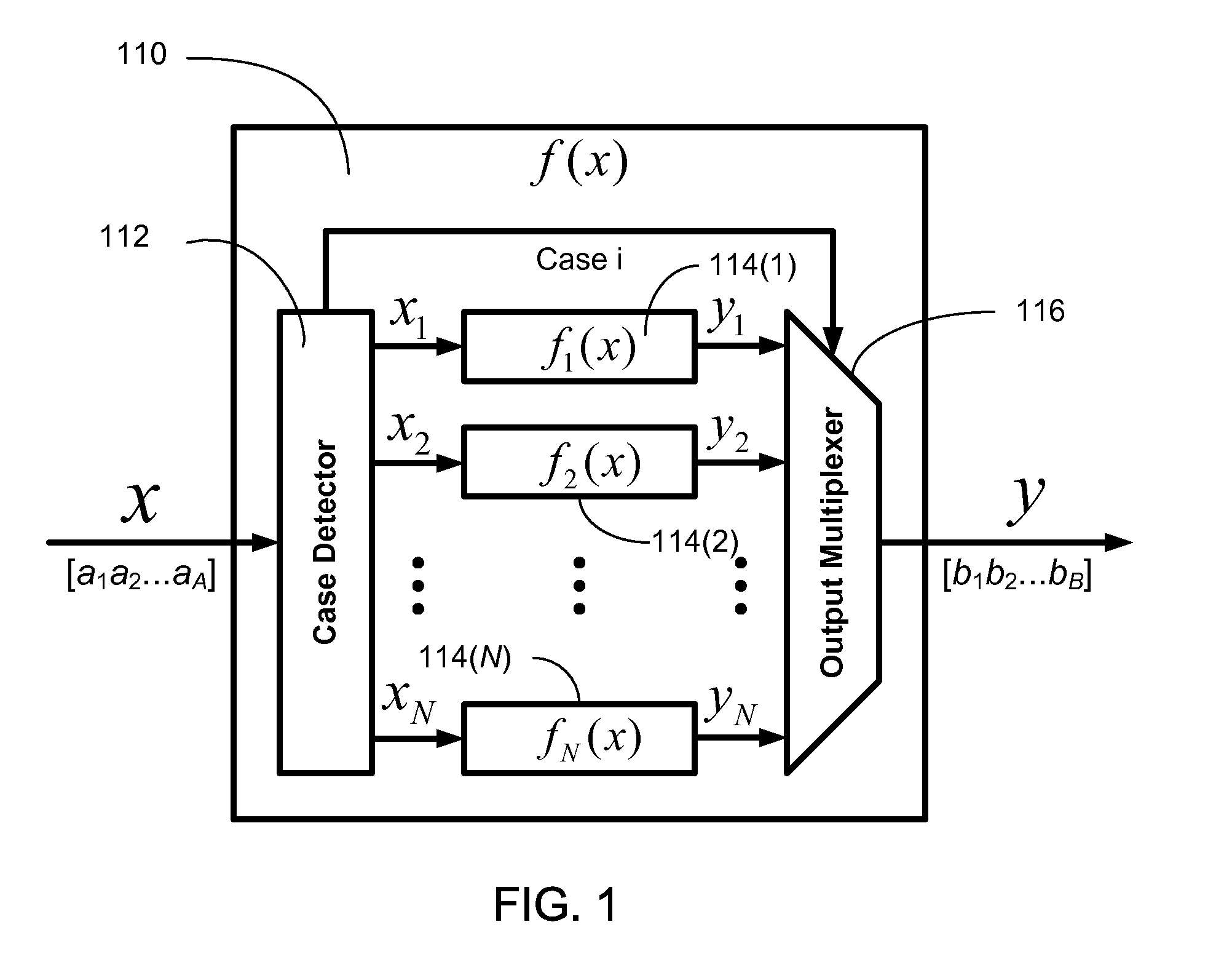Efficient Function Generator Using Case Detection and Output Selection
a function generator and case detection technology, applied in the direction of trigometric functions, instruments, power supplies for data processing, etc., can solve the problems of direct impact on power consumption in integrated circuits, for example, and achieve the effect of efficient multiplexing the resul
- Summary
- Abstract
- Description
- Claims
- Application Information
AI Technical Summary
Benefits of technology
Problems solved by technology
Method used
Image
Examples
Embodiment Construction
[0036]FIG. 1 illustrates a block diagram of a function generator 110 that generates a function ƒ(x). The function generator 110 includes a case-detector 112, a plurality of sub-function generators (e.g., sub-function generators 114(1), 114(2) . . . 114(N)), and an output multiplexer 116. The function generator 110 accepts A inputs a1, a2, . . . , aA and produces B outputs b1, b2, . . . , bB, where A and B are any integers greater than zero. The input-output relationship(s) of the function generator 110 can be expressed in terms of a single-input x and single-output y as y=ƒ(x), where the single-input x is constructed from a1, a2, . . . , aA, and where the single output y is constructed from b1, b2, . . . , bB. One such construction for finite-precision digital inputs (a1, a2, . . . , aA) and digital outputs (b1, b2, . . . , bB), for example, is simple concatenation (e.g., x=[a1, a2, . . . , aA] and y=[b1, b2, . . . , bB]). For the purpose of discussing of the disclosed system and me...
PUM
 Login to View More
Login to View More Abstract
Description
Claims
Application Information
 Login to View More
Login to View More - R&D
- Intellectual Property
- Life Sciences
- Materials
- Tech Scout
- Unparalleled Data Quality
- Higher Quality Content
- 60% Fewer Hallucinations
Browse by: Latest US Patents, China's latest patents, Technical Efficacy Thesaurus, Application Domain, Technology Topic, Popular Technical Reports.
© 2025 PatSnap. All rights reserved.Legal|Privacy policy|Modern Slavery Act Transparency Statement|Sitemap|About US| Contact US: help@patsnap.com



